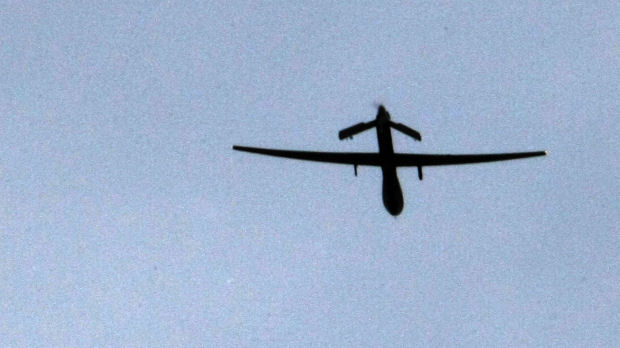Pakistan deaths prompt questions over US drone use
The deaths of two British al-Qaeda members in a drone attack in Pakistan have focused attention on US deployment of unmanned airplanes in north Waziristan.

The deaths of two British al-Qaeda members in Pakistan have focused attention on CIA drone attacks in the country.
Pakistan is an ally of the United States, yet the last two years have seen an escalation in the number of strikes by UAVs (unmanned airborne vehicles) in the federally administered tribal areas.
Figures published on the New America Foundation website, based on reports by “reliable media organizations”, show an escalation in drone attacks and attack-related deaths during 2009 and 2010. The NAF concludes that the non-militant fatality rate since 2004 is 25 per cent and that in 2010 “it is more like six percent”.
The figures suggest an increasingly successful campaign of targeting al-Qaeda and Taliban supporters in the north western territories, and they appear to justify the use of unmanned missile strikes.
One reason for the success of drone attacks in Pakistan is that US cooperation with Pakistan has presumably got better. Noah Shachtman, Wired.com
But defence experts differ in their analysis of why this is happening. Meanwhile, campaigners for the rights of civilian victims of conflict maintain that the figures are in any case skewed and that they underestimate the number of innocent casualties.
Noah Shachtman, editor of Wired.com’s Danger Room told Channel 4 News there are three reasons for the “success” of UAV attacks in Pakistan under the Obama presidency.
“First, the drone campaign is much more aggressive. Number two, presumably US cooperation with Pakistan intelligence has got better and the CIA has developed more assets there.
“And thirdly, according to published reports, the CIA is using smaller weaponry on the drones, so the chances of collateral damage have been reduced.”
But reporting of drone strikes underestimates the number of civilian deaths they cause, according to Christopher Rogers, author of a study by the Campaign for Innocent Victims of Conflict (CIVIC). “It’s almost certain that US drone strikes are causing more civilian casualties than the US has thus far admitted,” he says.
More on United States drone strikes in Pakistan: Pakistan drone warfare - special report
Although the Central Intelligence Agency does not divulge how many UAVs it operates, CIA drone attacks in Pakistan have undoubtedly become one of the Obama administration’s signature efforts in the terror war.
As early as 2007, Barack Obama announced he would be willing to attack inside Pakistan, with or without Pakistani government approval. The first high-profile hostile military action during the Obama presidency took place in 23 January 2009, when up to 20 people were killed in remote US missile strikes on Mirali, an al-Qaeda and Taliban stronghold in north Waziristan.
Noah Shachtman’s view that improved local intelligence has contributed to better drone targeting is a restatement of conclusions offered to President Obama by two high-ranking CIA officials. Both cautioned against an over-reliance on UAV activity alone.
Former CIA analyst Bruce Riedel was commissioned early in 2009 to review the United States’ Af-Pak policies. His report argued that robot airplanes could only function successfully with ultra-secret CIA paramilitary teams on the ground in Pakistan.
Human intelligence is unreliable because normally the intent is to influence rather than inform. John Pike, director, GlobalSecurity.org
At around the same time, recounts author Bob Woodward in Obama’s Wars, General Michael Hayden, CIA director at the start of the Obama presidency, was saying that “The great lesson of World War II and Vietnam was that attack from the air, even massive bombings, can’t win a war.”
But John Pike, director of the GlobalSecurity.org website, is sceptical about the role of “human intelligence” in improving the success rate of drone strikes. During the Iraq war, he says, surveillance aircraft helped identify Baghdad bomb factories by filming terrestrial activity. Over time, movement patterns emerged which helped pinpoint certain locations.
“Drone strikes keep going up as they’ve developed better targeting,” Pike asserts. “It means pattern recognition has more data to work with. The more hours of surveillance video you have, you keep getting smarter.
“But if you rely on human intelligence, that is presumably in finite supply. And human intelligence is unreliable because normally the intent is to influence rather than inform.”
Tell that to residents of the village of Dargah Mandi, in north Waziristan, which came under fire twice in 15 minutes on 15 September of this year. Official sources told Channel 4 News a drone fired eight missiles at a suspect militant hideout. 12 people died, including villagers.
One unnamed official said it “seemed someone had provided wrong information to the American military in Afghanistan about the value of a high-value target”.
Below: Channel 4 News Washington correspondent Sarah Smith reports from Arizona on a programme training US soldiers to fly unmanned airborne vehicles